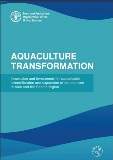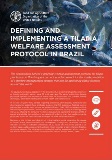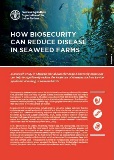Aquaculture technical reports
Publications

Aquaculture transformation – Innovation and investment for sustainable intensification and expansion of aquaculture in Asia and the Pacific region
2023
Asia and the Pacific region is the world’s largest aquaculture producer, contributing 92 percent of the world’s supply of farmed fish, crustaceans, molluscs, seaweeds and other aquatic foods. Sustainable aquaculture is increasingly being recognized as an important contributor to achieving the 2030 Agenda for Sustainable Development that covers multiple goals ranging from ending hunger, improving health and nutrition, responding to climate change, wealth creation and poverty reduction,.....

Defining and implementing a tilapia welfare assessment protocol in Brazil
2022
Although welfare protocols for fish have been developed in the past, indicators are species specific and peer-reviewed journals do not contain any tilapia welfare protocol assessments. The new tilapia welfare assessment protocol was disaggregated into four aspects: health, environment, behaviour and nutrition. If any problem regarding any of these aspects is found, actions need to be taken to improve it, resulting in better welfare. The researchers behind a practical welfare assessment protocol for tilapia...

How biosecurity can reduce disease in seaweed farms
2022
Despite all the potential nutritional, industrial, environmental, economic and employment benefits of seaweed aquaculture, seaweed productivity is declining in many areas of the world because of climate change impacts, resulting in more frequent seaweed disease outbreaks. While biosecurity protocols to minimize the likely risk of introduction and spread of disease pathogens and pests are applied to the production of most aquatic fish and shrimp species, they are not generally applied to seaweed production. A...

